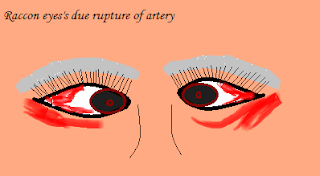physiotherapy:a boon or a curse | a boon or a curse | Is Science Boon or Bane
phsiotherapy keep's you moving....🏃
Hippocrates ( Master of medicine)😎 was the first one to root the 0importance of physiotherapy 💪 in the year 460 BC, Hippocrates introduce the idea of manual manipulation for pain relief. Since then physiotherapy has evolved from simple massage to complex range of therapies.
It was in the 1950s that the physiotherapy has started outside the hospital and the field has markely increased.
It has got specialised in cardio-pulmonary💛, skin, neurological and sports therapy🚴.
Now this field has come a long way from the early nineteenth century to this date. It also include ortopedic condition such as fractute, joint disorder or dislocation, amputation, back and neck pain, arthritis and post operative management have become a more cahllening task for physiotherapist to improve the strength💪, range of motion🙌 and endurance, joint mobilization and modalities to reduce pain.
In neurological case like stroke, parkinson's disease, cerebral palsy and spinal cord injury.
A very torturing fact about being a physical therapist is that the old ancient belief on physiotherapy as a massager , this is due to lack og knowledge and awareness.
During holiday's i go back to my place my hometown, One of my neighbour aunty use come and meet me to know about my course. As soon as i start to speak " she answered me" hmm...!! in these field you have to massage full body of the patient or like the person who runs in the middle of the field when a player get injured right. Hearing those words made me speechless but i smiled And said " a physiotherapist is the one who brings back your normal life when you suffer from movement disorder. Remember you had got stuck your neck and you went for physiotherapy treatement.
"AFTER ALL MOVEMENT IS THE MEDICINE FOR CRAETING A CHANGE IN THE PERSON LIFE."
phsiotherapy keep's you moving....🏃
Hippocrates ( Master of medicine)😎 was the first one to root the 0importance of physiotherapy 💪 in the year 460 BC, Hippocrates introduce the idea of manual manipulation for pain relief. Since then physiotherapy has evolved from simple massage to complex range of therapies.
It was in the 1950s that the physiotherapy has started outside the hospital and the field has markely increased.
It has got specialised in cardio-pulmonary💛, skin, neurological and sports therapy🚴.
Now this field has come a long way from the early nineteenth century to this date. It also include ortopedic condition such as fractute, joint disorder or dislocation, amputation, back and neck pain, arthritis and post operative management have become a more cahllening task for physiotherapist to improve the strength💪, range of motion🙌 and endurance, joint mobilization and modalities to reduce pain.
In neurological case like stroke, parkinson's disease, cerebral palsy and spinal cord injury.
A very torturing fact about being a physical therapist is that the old ancient belief on physiotherapy as a massager , this is due to lack og knowledge and awareness.
During holiday's i go back to my place my hometown, One of my neighbour aunty use come and meet me to know about my course. As soon as i start to speak " she answered me" hmm...!! in these field you have to massage full body of the patient or like the person who runs in the middle of the field when a player get injured right. Hearing those words made me speechless but i smiled And said " a physiotherapist is the one who brings back your normal life when you suffer from movement disorder. Remember you had got stuck your neck and you went for physiotherapy treatement.
"AFTER ALL MOVEMENT IS THE MEDICINE FOR CRAETING A CHANGE IN THE PERSON LIFE."



















